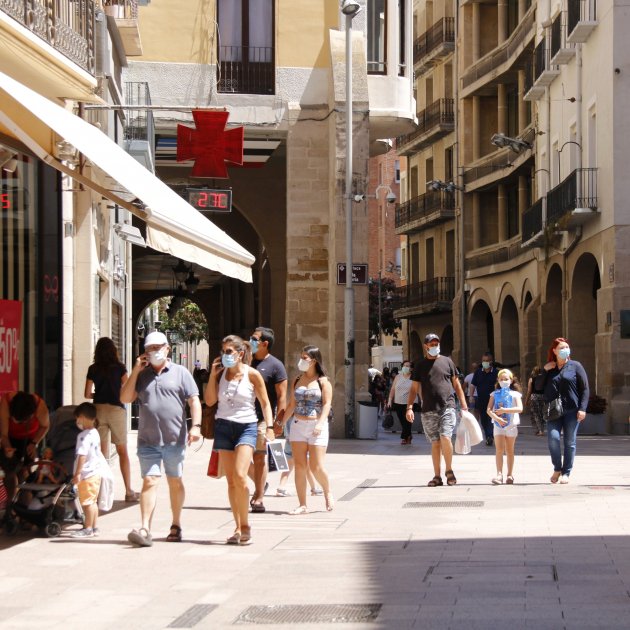It is now four days since the Catalan Government decided to re-impose lockdown on the western county of Segrià, centred on Lleida city. The executive made that decision after an urgent meeting with the Procicat civil protection committee on Saturday morning as a response to the coronavirus outbreaks that were occurring in the area.
This Tuesday, data from the Catalan health ministry indicates that 74 new confirmed cases of Covid-19 had been added to the Lleida total in the previous 24 hours, out of 2,615 cases accumulated since the beginning of the pandemic (341 in residences). The figures for recent days show 13 new cases for Monday, 62 for Sunday and 66 on Saturday, although these figures are growing by the hour - data on cases is added to the total for the day when the infection was confirmed, and there is often a time lag.
There are a total of 68 patients currently hospitalised for Covid-19 in Lleida: 44 in the Arnau de Vilanova Hospital (six of whom are in intensive care), plus two in the Santa Maria University Hospital's ICU and 22 in other centres.
As for deaths, the county has registered a total of 136 fatalities, including both confirmed and suspected Covid-19 deaths, the latest on 22nd June. Of these, 54 occurred in care homes, 75 in hospitals or health centres, 4 at people's homes and 3 are unclassified.
Below, graphs of new confirmed coronavirus cases per day for (1) Lleida health region and (2) the locked down Segrià county, which is part of the Lleida health region.
Cases will continue to grow
This morning, Catalan health minister Alba Vergés described the current situation in Lleida as "delicate", and reminded the public that the rising trend in cases cannot be expected to turn around immediately, but rather will continue to grow.
Catalan minister Alba Vergés announcing the reimposed lockdown confinement in Lleida on Saturday / ACN
In addition, the health portfolio holder noted that in the ICU at Lleida "half of the cases are young people aged around 40". The virus affects everyone, she said.
Similarly, Lleida health region director Divina Farreny also warned that "for the next ten to fifteen days cases will continue to increase".
Lleida hospital doubles its capacity
To ready itself for these expected patient arrivals, the main Arnau de Vilanova University Hospital in Lleida has in recent days doubled the beds available for those infected with the virus, making a whole new ward available.
In addition, the Catalan health ministry has decided to install a tent-based field hospital outside the hospital emergency room to attend to minor cases and avoid excess capacity in the interior of the centre.
Field hospital installed last Friday outside Lleida's Arnau de Vilanova University Hospital / RMP
Another of the measures taken by the Catalan health authorities is to appeal for health professionals from other parts of Catalonia to travel to Lleida to provide hands-on support for the emergency.
Farreny says she still has no data on how many professionals have volunteered, but a team from the adjoining health region of the Pyrenees were expected to arrive in the Segrià today to carry out testing on caregivers and residents in all of the county's care homes.
The outbreaks
At present, it's known that there have been outbreaks centred on a care home, several focused on fruit and vegetable producers, a hostel and a block of flats. In addition, the health authorities are investigating two centres of summer activities for children in the Lleida region for possible infections. One is thought to be located in the town of Tarrega.
A stay-at-home order?
For now, the confinement measures still allow the population to move around within the region, although it is recommended that social activity at least should be reduced to a minimum. Lleida senior epidemiologist Pere Godoy said on Monday that if, after two weeks, "there is no clear change in trend, a stay-at-home order will be considered" in the Segrià.
Antoni Trilla, head of epidemiology at Barcelona's Hospital Clínic, believes that such a home confinement order "could be one of the alternatives to consider" in the Segrià if the incidence of the the virus does not drop, but he clarified that "a time margin still has to be given” to see how cases and hospitalizations evolve.
